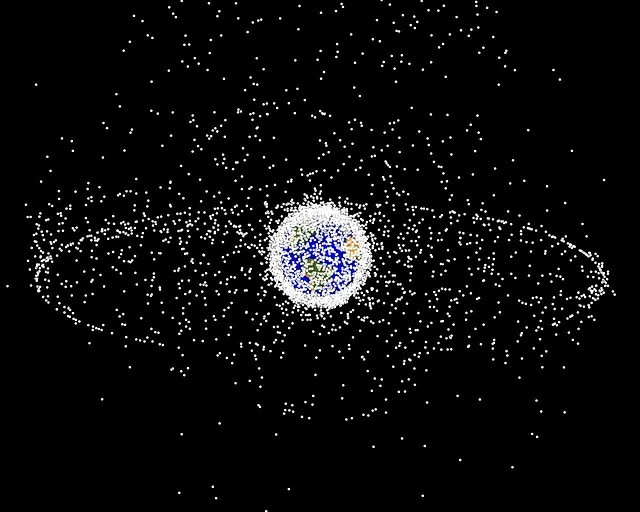Millions of space junk pieces are polluting Earth's orbit; and to prevent its further destruction, scientists call for a legally-binding treaty to ensure the growth of the international space industry.
The action was proposed after 200 countries agreed to a pact in segregating the High Seas after a 20-year process that the world should apply to protect the oceans.

Eliminate Space Junk: Scientists Call for Legally-binding Treaty to Protect Earth's Orbit
Space Junk Explained
Any human-made trash left in orbit around Earth is referred to as space junk, per Live Science. This includes satellites that ran out of power or left in orbit after their missions endeda and shattered pieces of machinery from a collision of objects. There are even microscopic paint flecks from rockets that also pollute Earth's orbit.
The Natural History Museum in London said that the US Space Surveillance Network is tracking over 23,000 pieces of space junk larger than a softball. But some pieces, an estimated 100 trillion pieces, are too small to be tracked. The European Space Agency (ESA) added that the vast majority of these pieces are less than 0.4 inches (1 centimeter).
Space junk has become more of a problem in recent years since even the tiny specks have caused incredible damage as they move quickly at about 15,600 mph (25,200 kph) or 10 times the speed of an average bullet shot. That means it could cause great damage to any object moving in opposite directions.
Furthermore, space junk frequently falls to Earth. According to the National Oceanic and Atmospheric Administration (NOAA), an average of 200 to 400 pieces of tracked space debris fell into Earth's atmosphere every year. Most of them are small enough to burn up entirely in the atmosphere so they never reach the ground.
However, larger space junk could survive and will typically fall down into the ocean. Although this is not always the case, like the charred spike-like chunk of SpaceX Crew Dragon spacecraft that fell through the atmosphere in 2022 and landed on a farm in Australia.
Governments Urged To Implement Rules in Satellite Sustainability
The number of satellites in orbit is predicted to grow from 9,000 now to more than 60,000 by 2030, EurekAlert! reports. Experts estimated that more than 100 trillion untracked parts of obsolete satellites are already orbiting the earth.
While such technology is utilized to bring a wide range of social and environmental advantages, there are concerns that the industry's expected growth would render substantial portions of Earth's orbit uninhabitable.
Multinational cooperation of specialists in sectors, such as satellite technology and ocean plastic pollution, wrote in a paper, titled "Protect Earth's Orbit: Avoid High Seas Mistakes" published in the journal Science, that this highlights the urgent need for global consensus on how to best control Earth's orbit.
They admit that a number of sectors and nations are beginning to focus on satellite sustainability, but believe that this should be extended to encompass any nation planning to use Earth's orbit.
They add that any agreement should include measures of implementing responsibility for their satellites and debris from the time they launch onwards. More so, they should consider commercial costs when looking to incentivize accountability. These considerations align with the proposals to address plastic pollution under the Global Plastics Treaty.
Researchers noted that large parts of Earth's immediate surroundings are at risk of the same fate as the High Seas due to overfishing, habitat destruction, deep-sea mining, and plastic pollution.
RELATED ARTICLE: Space Debris the Size of an Eraser at the End of a Pencil Travelling at 15,000MPH Created an Enormous Crater
Check out more news and information on Space Junk in Science Times.




![Earth's Quasi-Moon Kamo‘oalewa Could Originate From Lunar Surface Not Asteroid Belt [Study]](https://1721181113.rsc.cdn77.org/data/thumbs/full/53275/89/56/50/40/earths-quasi-moon-kamo-oalewa-could-originate-from-lunar-surface-not-asteroid-belt-study.png)









